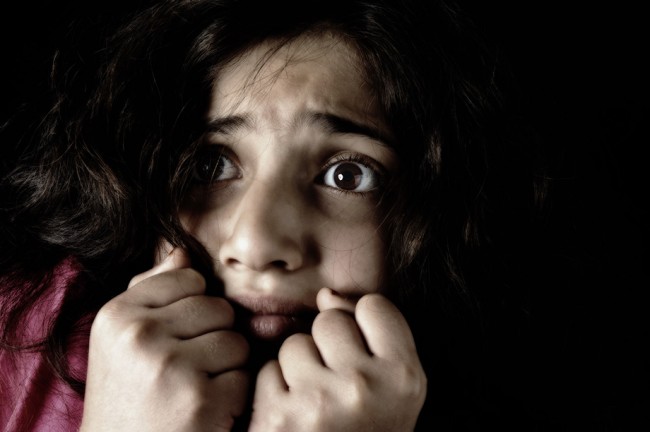Understanding and overcoming your child’s anxieties
The older you get, the harder it is to remember what it was like to be young. That can make it hard to understand your young children. They get scared of things – like the dark – that don’t seem at all scary to you. Yet they’re fearless when it comes to playing with a light socket. Children haven’t had the same experiences you’ve had, and don’t recognize what they should or shouldn’t fear.
A scary world.
When children show fear, don’t tell them to quit being babies, and don’t say they shouldn’t be scared. Think about helping your children manage fear rather than trying to eliminate their it. They should be scared of certain things such as talking to strangers, aggressive dogs, and moving vehicles. After all, you have your own set of fears, even if you don’t like to admit it.
Be understanding and sympathetic, and when your kids are old enough, talk with them about their fears. Tell them about something that used to scare you, your kids look up to you, so they’ll learn that if you overcame your childhood fears, they can too.
Changing fears.
As children age, their fears are likely to change. Anticipating these changes, and knowing which fears are most likely to manifest at various ages are crucial to understanding your child’s world. And just as kids of different ages have different fears, they require different methods to cope and overcome them. For infants, anything that disrupts their routine or sense of security can be scary. They need to feel close to parents or caregivers, so physical contact goes a long way. So does verbal communication. Even if your baby can’t understand you, the sound of your voice lets her know you’re close.
New fears are based on a combination of experience and imagination. As children age, help them understand the difference between real and imaginary threats, and explain that there’s nothing to fear from the imaginary ones. Teach them how to react to real ones and how to tell if a new experience should be threatening. For example, a pot or pan can only burn them if it’s hot, so don’t touch one if it’s on the stove or contains something hot.
Separation anxiety.
Young children need time to learn about object permanence, which is the idea that just because something can’t be seen, doesn’t mean it’s gone forever. Children need to learn that when you leave the house, you will be back.
You can ease this fear by developing a routine for saying goodbye. Be consistent so they learn when you leave, you’re always coming back. Keep their surroundings consistent and familiar, so that even when you’re not there, familiar objects or people are. Try short periods of separation before long ones, so your kids gradually get more comfortable when you’re away.
Be a good role model.
Your children look to you for cues on how to react to new things. Their first reaction may be fear, but if you project confidence, they’ll learn it, too. By understanding your children’s anxieties, you can help them understand their own fears – and overcome them.
If your child is experiencing fear and anxiety related to a hospital environment, contact a Child Life specialist. If your child is struggling with persistent fear and anxiety unrelated to the hospital, it might be time to talk to your primary care doctor. Don’t have a doctor? Find one here.







